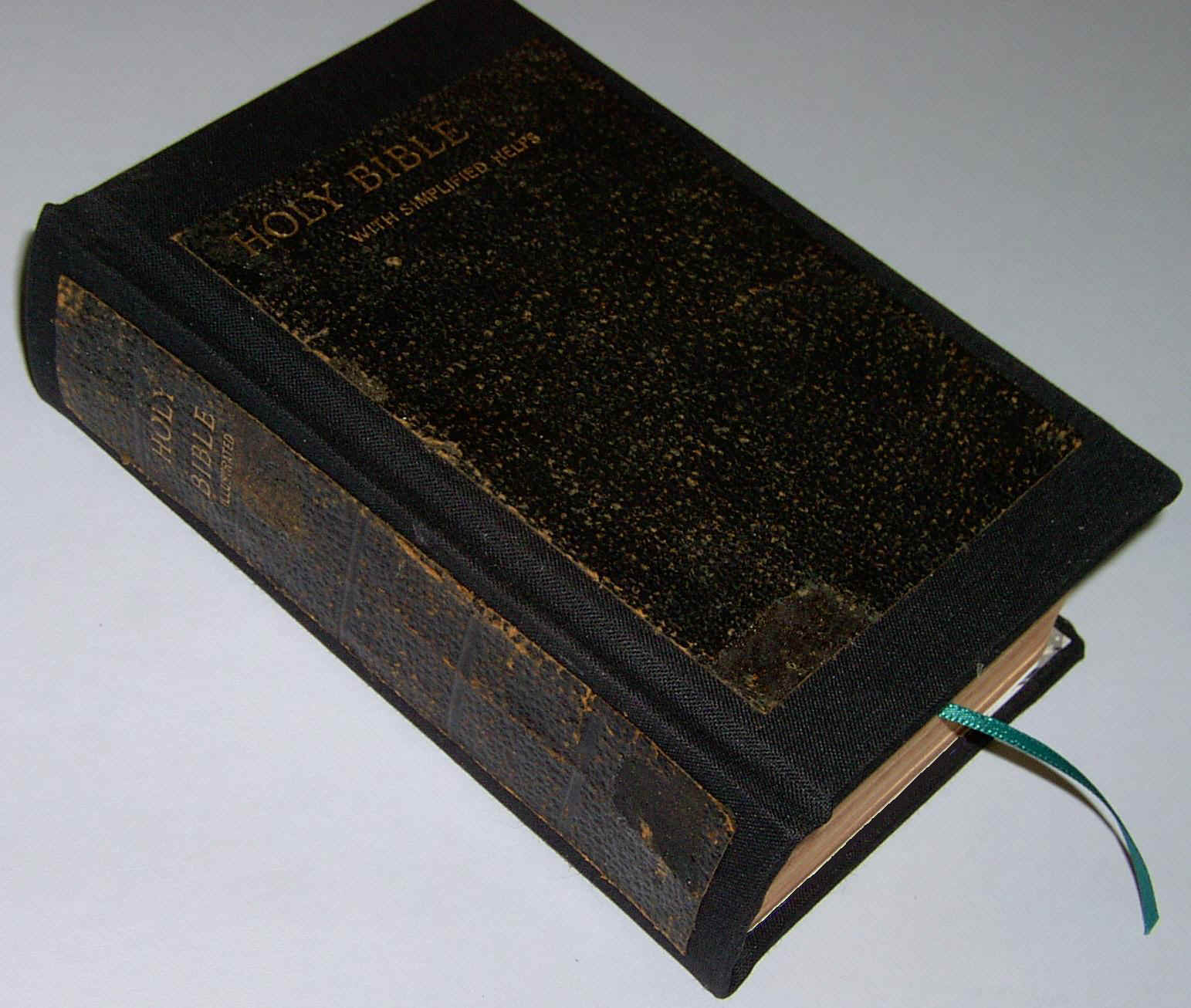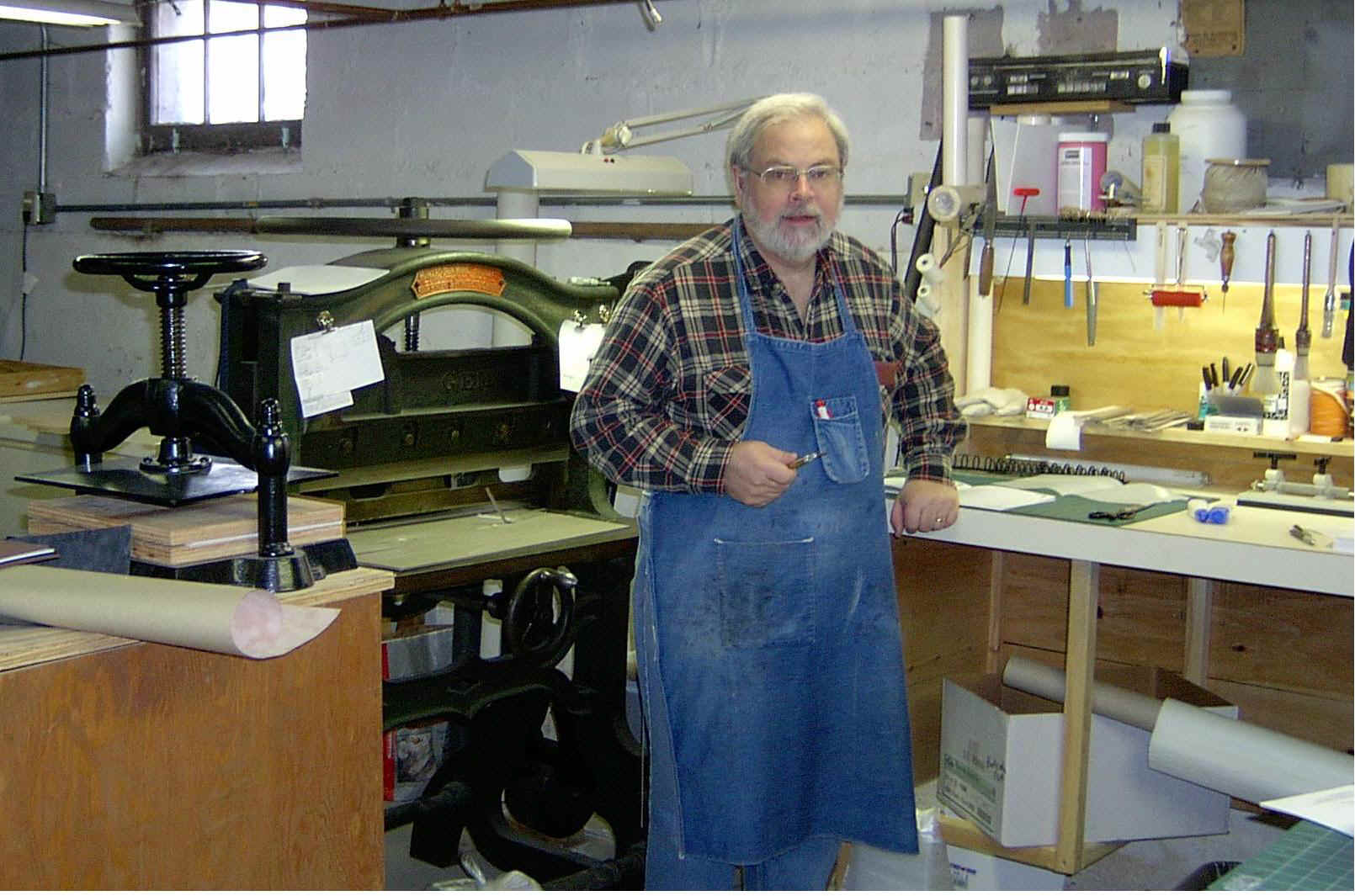
My
philosophy as a bookbinder is to change as little as possible the appearance of an old
book as I attend to the repair of it . Unlike other bookbinders or commercial
binderies where it is regular practice to just remove the old casing (covers, book
covering material and spine), trim the uneven textblock pages in a guillotine cutter
(which may also remove handwritten notes on the margins, especially in Bibles), and simply
recase the textblock in a new modern book cloth, I treat each book differently in view of
the repairs needed. An old treasured book should look like an old treasured book.
Therefore, the book’s edges will not be trimmed, nor will the original boards be
replace unless they are damaged beyond repair. If new cover material is needed, effort
will be made to reglue the spine title/design on the new material. Special requests will
be honored.
| I received an unsolicted thank you note from
Judy (below). As you can see in the picture at the right, the glue has cracked and separated from the spine. I trimmed the text box spine edge in a guillotine cutter and re-glued the spine with PUR (Polyurethane Reactive) glue. PUR is the same glue used for telephone books and has outstanding adhesive qualities. July decided to "upgrade" her Bible with a beautiful full-grained goatskin leather cover and added three new ribbons. |
|
| "Thank you again for your wonderful work
done on the binding of my Bible. I thought I might have to send it away in the mail and in the process, gets loss, or just have lots of problems, or it would sit in pieces and I would fumble along with it. "But no - I came across Steve's Bookbinding. Not only is my Bible better than it ever was - it all happened so fast! This has meant so much to me. "Thanks. God bless you and I hope to send a few more things your way. I certainly would recommend your beautiful work." Judy C. |
Swedish Bible 1729
This Bible was printed in Stockholm in 1729 and has been passed on eight generations in one family. The spine and signatures were tight and in fine condition with the front endpapers missing and the front cover separated. Two prior attempts were made to reattach the cover: A waxed thread sewing through the spine leather and the cover leather, then a black cloth tape glued to spine and cover. You can see the tape separating from the spine in the photo below.
|
|||||||||||||||||||
With antiquarian Bibles such as this one, it
is best not to change the appearances when restoring the binding.
|
|||||||||||||||||||
Novel, 1912 This popular novel published in 1912 has special sentimental value to the customer. Both front and back covers were loose, the spine glue was brittle and mostly missing and the spine book material was threadbare and almost detached.
|
|||||||||||||||||||

